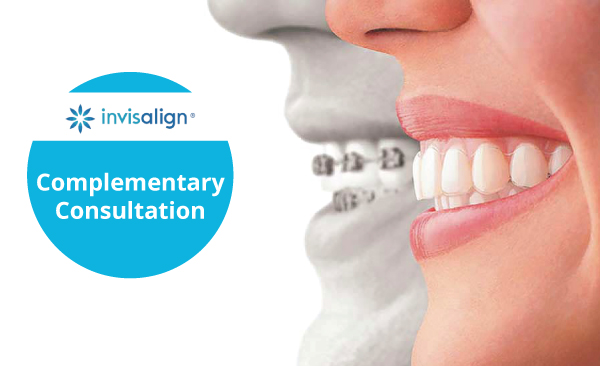A knocked-out tooth is one of the most urgent dental emergencies. Whether due to a sports injury, accident, or unexpected mishap, knowing what to do in the immediate aftermath can mean the difference between saving and losing a tooth.
We commonly deal with dental emergencies at Waterdown Smiles Dentistry. This comprehensive guide provides step-by-step instructions on handling this dental emergency, so you’re prepared if you or someone you know experiences this situation.
Immediate Steps: The First 30 Minutes Matter
1. Stay Calm and Act Quickly
When a tooth is knocked out, it’s essential to remain calm yet act quickly. The chances of successfully re-implanting the tooth decrease significantly after 30 minutes.
2. Locate and Handle the Tooth Properly
Find the tooth as soon as possible. Handle it by the crown (the part that is visible in the mouth), not the root. Touching the root can damage cells necessary for bone reattachment.
3. Clean the Tooth if Necessary
If the tooth is dirty, gently rinse it with milk or saline solution. Avoid using tap water if possible, as chlorine and other chemicals in tap water can damage the root. Do not scrub the tooth or remove any attached tissue fragments.
Preserving the Tooth
1. Attempt Reinsertion
If possible, try to reinsert the tooth into its socket. Gently push it in with your fingers, or place it above the socket and close your mouth slowly. If it’s a child’s tooth, avoid this step to prevent the child from swallowing the tooth.
2. Keep the Tooth Moist at All Times
If reinsertion isn’t possible, keep the tooth moist. Place it in a container with milk, saline solution, or a cell growth medium like Save-a-Tooth. If none of these are available, use water with a pinch of salt. The key is to prevent the tooth from drying out.
3. Avoid Wrapping the Tooth in Tissue or Cloth
Do not wrap the tooth in a tissue or cloth, as this can cause the tooth to dry out and decrease the chances of successful reimplantation.
Seeking Professional Dental Care
1. Visit a Dentist or Emergency Room Immediately
Time is of the essence in treating a knocked-out tooth. Head to a dentist or emergency room as soon as possible. Bring the tooth with you, kept moist as described above.
2. Call Ahead if Possible
If you can, call the dental office or emergency room en route to inform them of the situation. This allows the staff to prepare for your arrival and provide immediate care.
3. Follow Up
After the initial treatment, it’s important to follow up with your dentist. They will need to check the condition of the reimplanted tooth and adjacent teeth, and determine if further treatment is necessary.
Preventing Tooth Loss: Protective Measures
1. Wear Mouthguards During Sports
For those involved in contact sports or activities that carry a risk of facial injury, wearing a mouthguard is crucial. Custom-fitted mouthguards from your dentist offer the best protection.
2. Avoid Using Teeth as Tools
Never use your teeth to cut, hold, or open things. This can lead to chips, cracks, or even knocking a tooth out.
3. Regular Dental Checkups
Regular checkups can identify and address potential issues that might weaken teeth, such as decay or loose fillings, making them more susceptible to being knocked out.
Understanding the Reimplantation Process
1. The Procedure
Reimplanting a tooth involves inserting it back into its socket and stabilizing it. Your dentist may use a splint to hold the tooth in place for several days or weeks.
2. Root Canal Therapy
Often, a tooth that has been knocked out and reinserted will require root canal therapy, either immediately or at a later date, to preserve the tooth.
3. Monitoring for Resorption
Sometimes, the body rejects the reimplanted tooth in a process called resorption, treating it as a foreign object. Regular dental visits post-reimplantation are essential for monitoring this.
Managing Pain and Recovery
1. Pain Management
After a tooth is knocked out, you may experience pain and swelling. Over-the-counter pain relievers can help, as can cold compresses applied to the outside of the face near the injured area.
2. Dietary Adjustments
Eat soft foods and avoid biting down on the reimplanted tooth while it heals.
3. Oral Hygiene
Maintain good oral hygiene to prevent infection. Your dentist may recommend avoiding brushing the injured area for a short period, but continue to clean the rest of your mouth.
The Role of Restorative Dentistry
If a tooth cannot be saved, modern restorative dentistry offers several options:
- Dental Implants: These are a durable and natural-looking solution.
- Bridges: A bridge can replace one or more missing teeth.
- Partial Dentures: These are a less invasive option and can be removed for cleaning.
Conclusion: Be Prepared for Dental Emergencies
A knocked-out tooth is a dental emergency that requires quick thinking and immediate action. By understanding the steps outlined in this guide, you can increase the chances of saving the tooth and maintaining your oral health.
At Waterdown Smiles Dentistry, we are here to help in all dental emergencies. Remember, the best defense against dental emergencies is prevention, including wearing protective gear during sports and maintaining regular dental checkups.
If you ever find yourself in a situation with a knocked-out tooth, remember these guidelines and seek professional dental care immediately. With prompt action and proper care, a knocked-out tooth doesn’t have to mean a permanent loss.




